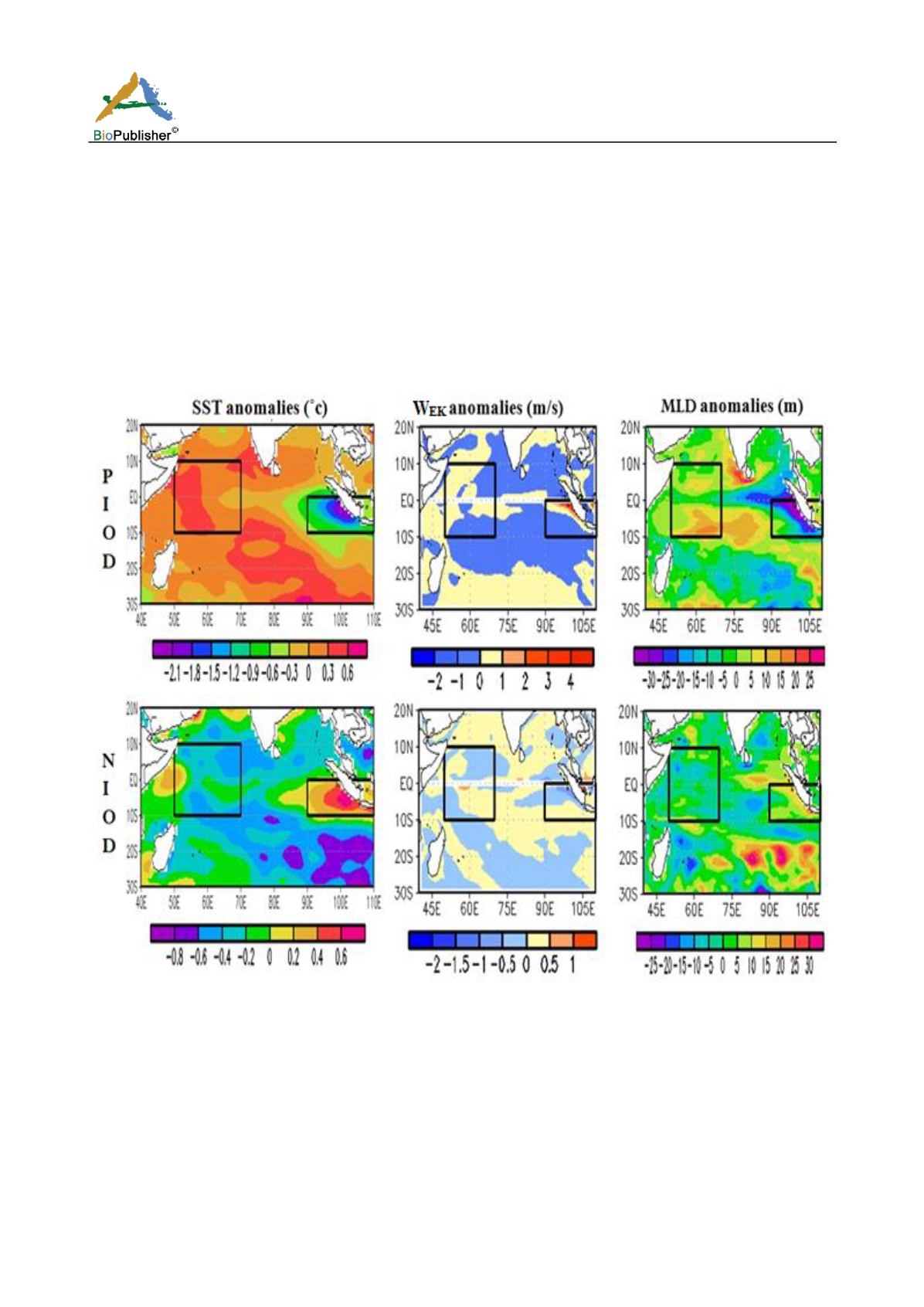
International Journal of Marine Science2016, Vol.6, No.56, 1-9
7
eastern box is characterized by cooler SST anomalies during positive IOD event and correspondingly positive
Ekman pumping anomalies and negative MLD anomalies whereas western box has negative Ekman pumping
anomalies, and positive MLD anomalies in agreement with warmer SST anomalies. During negative IOD event
these anomalies change sign as polarity reverses. Comparing magnitudes during positive and negative dipole
events cooling in the east box during positive IOD (~ 2
˚
C) is more than warming during negative IOD event
(~1
˚
C). In both the east box and west box Ekman pumping values are more during positive IOD than that during
negative IOD. Also, the magnitude of MLD anomalies is more during positive IOD than during negative IOD
event in both eastern and western boxes. In both the IOD events positive and negative, amplitude of deviations in
Ekman pumping, MLD and SST is more in eastern box than those in the western box. This is clearly seen from the
table I described below.
Figure 6 Composite of monthly mean SST (
˚
C), Ekman pumping (*10
-5
m/s) and MLD (m) anomalies during positive and negative
IOD events
Further, MLD and Ekman pumping responses during El Nino and IOD phenomena are considered united. Table 1
is gives the amplitude of SST, MLD and Ekman pumping deviations during different El Nino and IOD events
considering the average over all months of event occurrence. It is seen that SST deviations are more during El
Nino (~2 - 3
˚
C) than that in IOD event, values being in the range of 0.5 to 1.5
˚
C. However, magnitude of Ekman
pumping anomalies are higher (by one order) during IOD event especially positive one as compared to El Niño/La
Nina event. Deviations in the MLD are also higher in case of IOD events. Thus the ocean parameters like MLD
and Ekman pumping respond to a greater extent during IOD than during El Nino/La Nina event.


